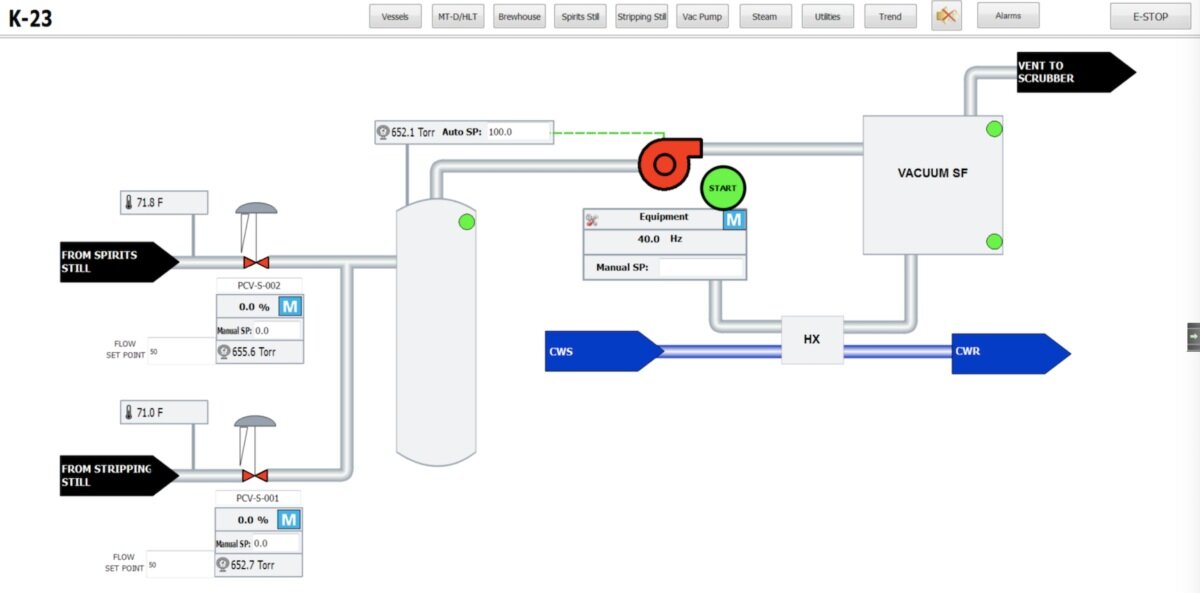
Human-Machine Interfaces (HMI)
What is an HMI?
HMI stands for Human Machine Interface and—very true to form in the industrial world—it is a very literal term. HMIs allow you (the human) to input information into the machine you’re working on, and observe the current status and functioning of the system’s component parts.
You can also think of an HMI as a touch screen. In fact, if you think of your phone as an HMI, you probably use an HMI all the time. Most “Industrial” HMIs are much more rugged, expensive, and don’t look as nice when compared to “Commercial” HMIs such as smart phones, iPads, tablets, touch screen laptops and more, but they work in very similar ways.
Commercial Vs. Industrial HMIs
If we compare a Siemens “Industrial Tablet” with an Apple iPad, we’ll notice several differences. Similar to many consumer products, the iPad is designed to be aesthetically pleasing with a lightweight build for user convenience. On the other hand, an industrial tablet from Siemens and others is designed to be rugged for many years of hard use on a factory floor. It will get dropped and banged around—and at some point it will probably get run over by a fork lift. If your HMI will be expected to perform in a challenging environment, then you will most likely need a industrial tablet.
Do some facilities use iPads? Yes, they do, and very successfully. But, generally these facilities leave the HMIs in the hands of managers/supervisors, or they’re not worried about someone taking an iPad home or constantly dropping it. Some smaller facilities love the option to use their phones to monitor, input data, and control. Additionally, desktop computers, laptops, and pretty much anything with an interactive screen can serve as an HMI.
In most cases, industrial facilities should first consider industrial technology. And commercial applications should first look at commercial technology. As with everything, your application will be different. If you have questions or have not decided how to choose, please feel free to reach out and ask. We’re happy to delve more into detail about our experiences and help you choose/set up the HMI that best suits your needs.
HMI Design
HMIs are highly customizable down to fonts and colors. A general guiding principle is to design your HMIs in a way that maximizes ease of use by the H(uman) part of the equation. Operator ease of use impacts overall efficiency, which is a major point of having an HMI in the first place.
Consider the following when designing an “easy to use” HMI for your application:
How complex do the inputs need to be?
How many functions need to be controlled?
How would you like to control them?
What other systems will need to connect with the HMI?
What will the working environment your HMI be like? (How many forklifts pose an imminent threat?)
What will make the most visual sense for the controls?
All the factors might sound overwhelming, but Corso Systems is well-versed in designing for what each individual customer wants and needs. If you are expanding a design that is currently working for you, we’ll happily follow those colors, and themes. Looking to start over? We’d recommend looking at the High Performance HMI philosophy (it’s the best new thought leadership for making HMIs work for everyone). Not sure where you are at the moment? We can help you figure that out, too.
HMI Software
Our favorite HMI platform on the market is Ignition by Inductive Automation. It provides not only everything you could need or want in an HMI package, it gives you the ability to integrate with any technology across your entire business!
If you have any questions or need any additional information about HMI software, including how you can easily migrate from any HMI platform to Ignition using tools developed by Corso Systems, please reach out and let us know!



